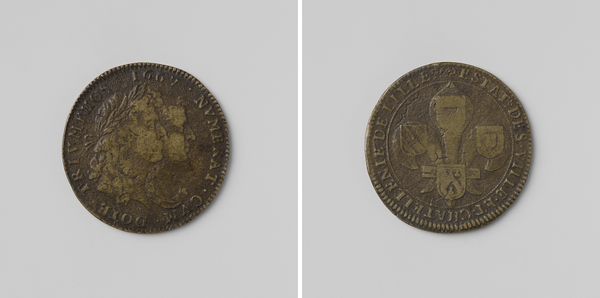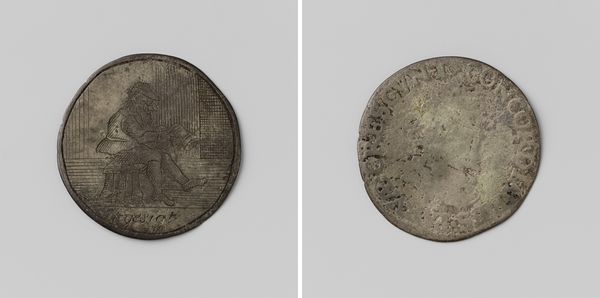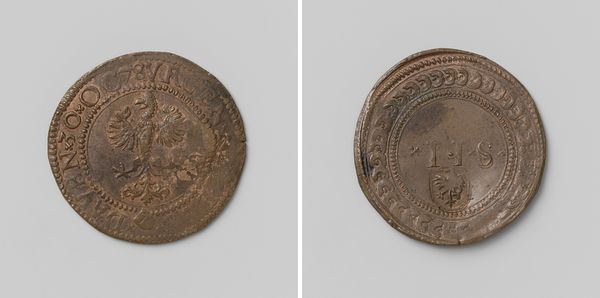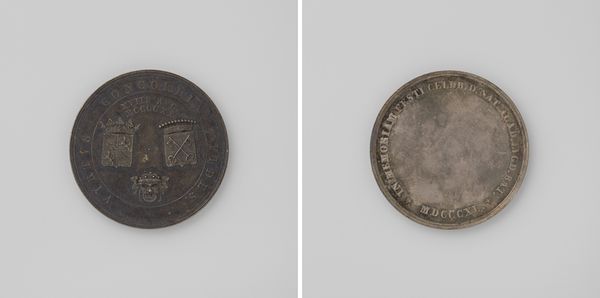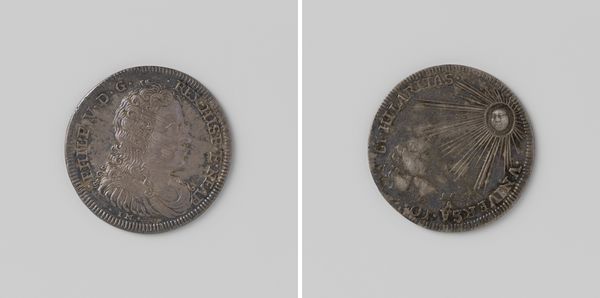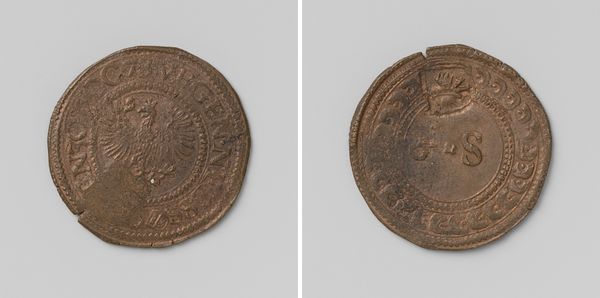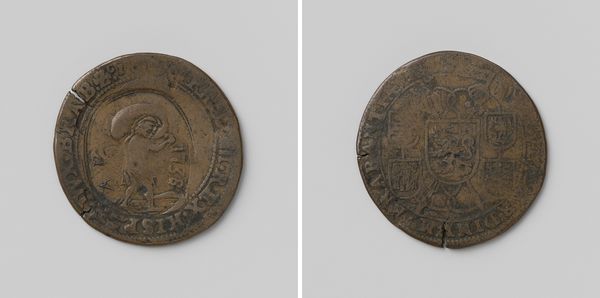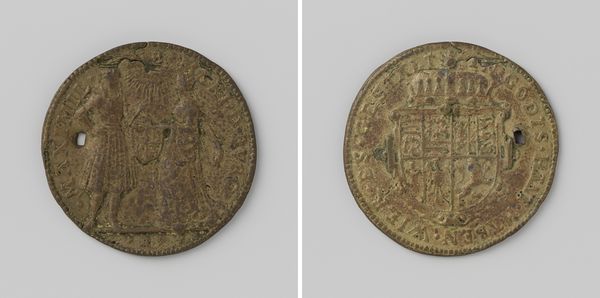
print, metal, relief, engraving
#
portrait
#
neoclacissism
# print
#
metal
#
relief
#
history-painting
#
engraving
Dimensions: diameter 1.5 cm, weight 1.67 gr
Copyright: Rijks Museum: Open Domain
Editor: This is a commemorative medal, “Oath of Leopold of Saxe-Coburg to the Constitution,” from 1831. It's rendered in metal relief, probably an engraving of some kind. It feels like it wants to project the authority of a new nation but feels a little simple. How should we interpret this? Curator: A fascinating artifact! Consider this not just as an image but as a powerful symbolic object meant to be distributed and kept. The very material--metal--speaks to durability and timelessness. What do you make of the imagery, the two distinct sides? Editor: Well, one side features a crown over what looks like the royal cypher or coat of arms, while the other has a tablet with the words "Constitution Belge." It evokes something like Moses receiving the Ten Commandments! Curator: Precisely! It's deliberately echoing that, and Neoclassicism always had an appreciation for antiquity. The tablet is explicitly connecting the new Belgian constitution with foundational concepts of law and divine right, but translated into a secular, national context. The visual language makes this more immediate. The image communicates ideas of national order and divinely sanctioned power, both for the literate and the illiterate. The implicit question: how else might the designer have evoked tradition or innovation here? Editor: The crown as a symbol of tradition I understand. But that tablet form... Did they have any other options to evoke, say, innovation, aside from portraying something more modern? Curator: Good question. Perhaps the absence of excessive ornamentation. Notice the deliberate simplicity, rejecting the florid styles of previous eras. By invoking a visual language that feels both ancient and modern, the designer creates a sense of enduring legitimacy for this newly formed nation. Editor: So, it’s not just a coin; it’s a portable statement of Belgium's identity. Thanks; that really helped me understand what the artist was trying to achieve. Curator: Indeed. It shows how carefully chosen symbols can anchor a nation’s identity at its very inception. And what can the power of symbols achieve today, versus in 1831? Something to consider...
Comments
No comments
Be the first to comment and join the conversation on the ultimate creative platform.
